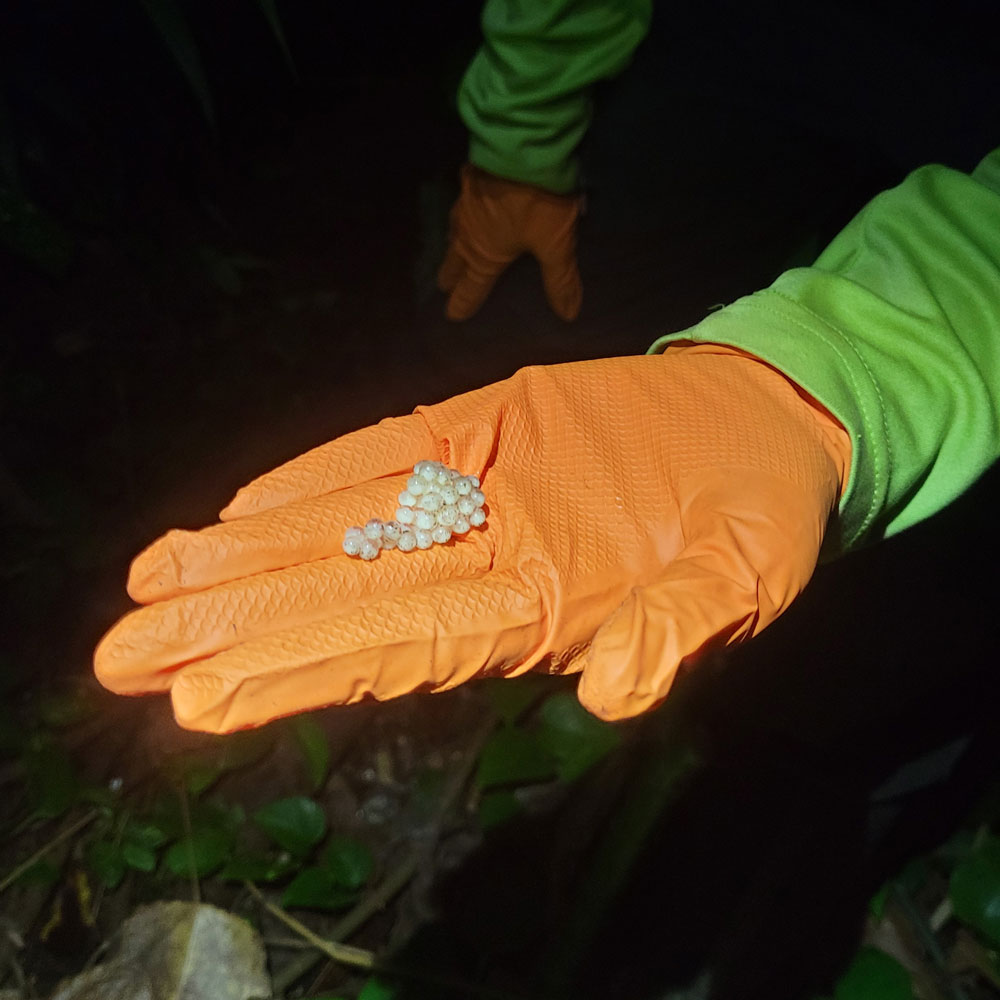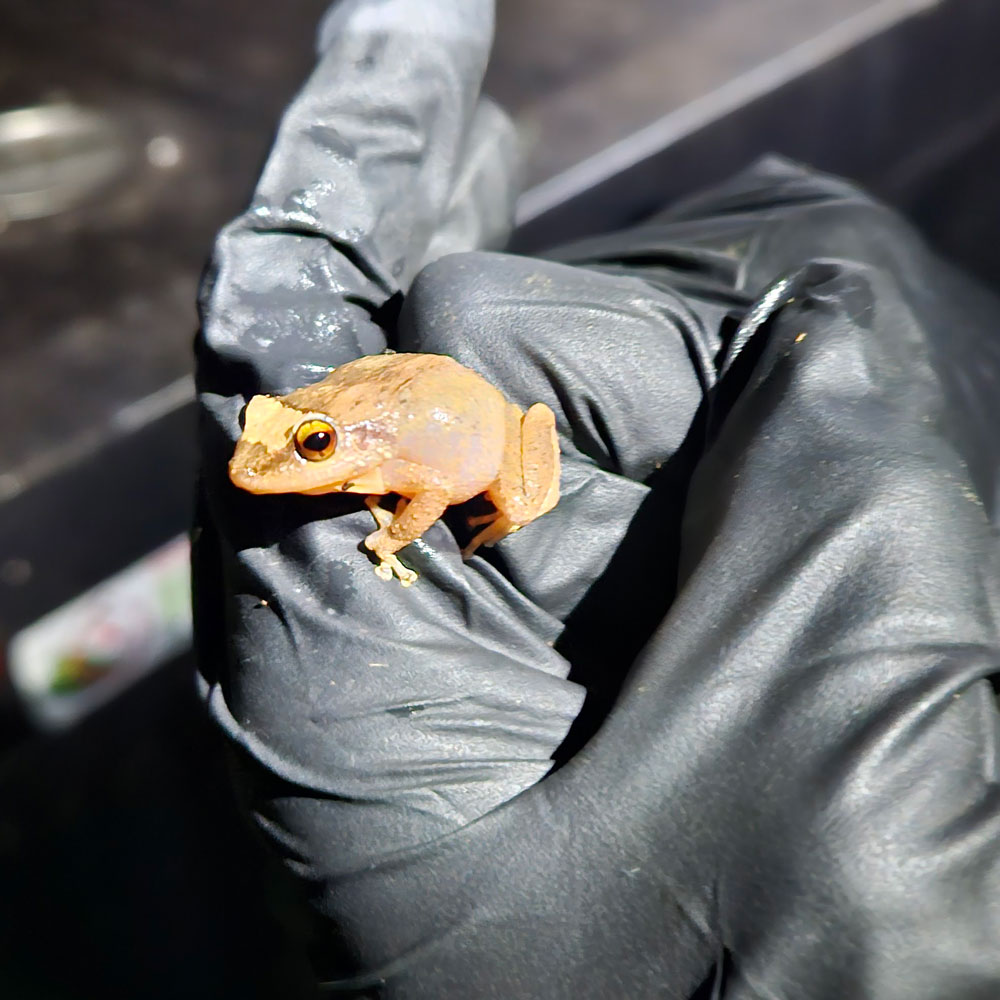
Coqui Frog
Eleutherodactylus coqui
Report if seen anywhere on Molokai
Species Info General
Family: Eleutherodactylidae
There are currently no known populations of coqui on Molokai. MoMISC works to educate community members to aid in early detection. Several coqui frogs have been reported and captured by MoMISC on Molokai.
What happens if someone is caught with coqui? All frogs in the order Anura are Hawaii State Injurious Species. It is prohibited to release Injurious Species into the wild; transport them to islands or locations within the State where they are not already established; or export outside the State. Any person or organization who intentionally transports, harbors or imports with the intent to propagate, sell, or release the coqui is in violation of State law and may be charged with a class C felony and subject to a minimum fine of $50,000 and maximum fine of $200,000, plus 3 years in prison.
PLEASE REPORT ANY COQUI FROG SUSPICIONS ON MOLOKAI IMMEDIATELY! CALL LORI BUCHANAN at (808) 336-0625 —- or EMAIL: molokaiinvasive@gmail.com —- or call Statewide pest hotline at (808) 643-PEST



Identification/Description
- Small, nocturnal (night-active) frog about the size of a quarter, up to two inches in length
- Usually brown or gray-brown, may have a lighter stripe down its back
- Male’s mating call is a two-note, high-pitched “co-qui” (pronounced ko-kee)
- Native to Puerto Rico, accidentally introduced to Hawaii hidden in plants around or before 1988
- Not sure if what you’re hearing is Coqui? Check out this sound loop.
Impacts
- No natural predators to keep populations in check (and no natural competitors), populations have reached 55,000 frogs per hectare in some Hawaii populations (24,000 frogs per hectare in Puerto Rico)
- Eat huge quantities of insects, removing insects from forest floor to treetops.
- Loss of insect services such as pollination
- Disrupt the balance of vulnerable native ecosystems
- Potential food source for snakes if they were to arrive
- Loud, incessant and annoying call from dusk until dawn
- Adverse economic impacts on tourism
- Decreased export plant sales
- Disclosure requirement for real estate transactions, has resulted in decreased property values in some locations
Spread
The importing of plants to Molokai is the most common route of spread for many invasive species. Coqui are great at hiding and have been known to hitchhike around the islands in potted plants, landscaping material, camping equipment, vehicles, shoes, and building supplies.
In Hawaii:
- Hawai‘i Island: Coqui frogs have completely invaded most of East Hawaii from Glenwood to Kalapana and throughout North Hilo, with dozens of smaller populations sprinkled throughout the rest of the island.
- Kaua‘i: A breeding population of coqui of about ten acres was discovered on Kaua‘i in 2001. Kauai Invasive Species Committee (KISC), HDOA, and other partner agencies eradicated coqui from Kaua‘i in 2012. Coqui frogs continue to hitchhike to Kaua‘i occasionally, but they are currently controlled by KISC.
- O‘ahu: There are three known populations of coqui frogs in Waimanalo, Palolo Valley, and Kuli‘ou‘ou Summit. HDOA, DLNR, and Oahu Invasive Species Committee are working to control these populations with the hope of eradication.
- Maui: Maui has nine active populations of coqui frogs, mostly contained to a six-square mile section of Haiku. Maui Invasive Species Committee currently works to keep the Haiku populations contained and eradicates other populations elsewhere on the island.
Resources/References


